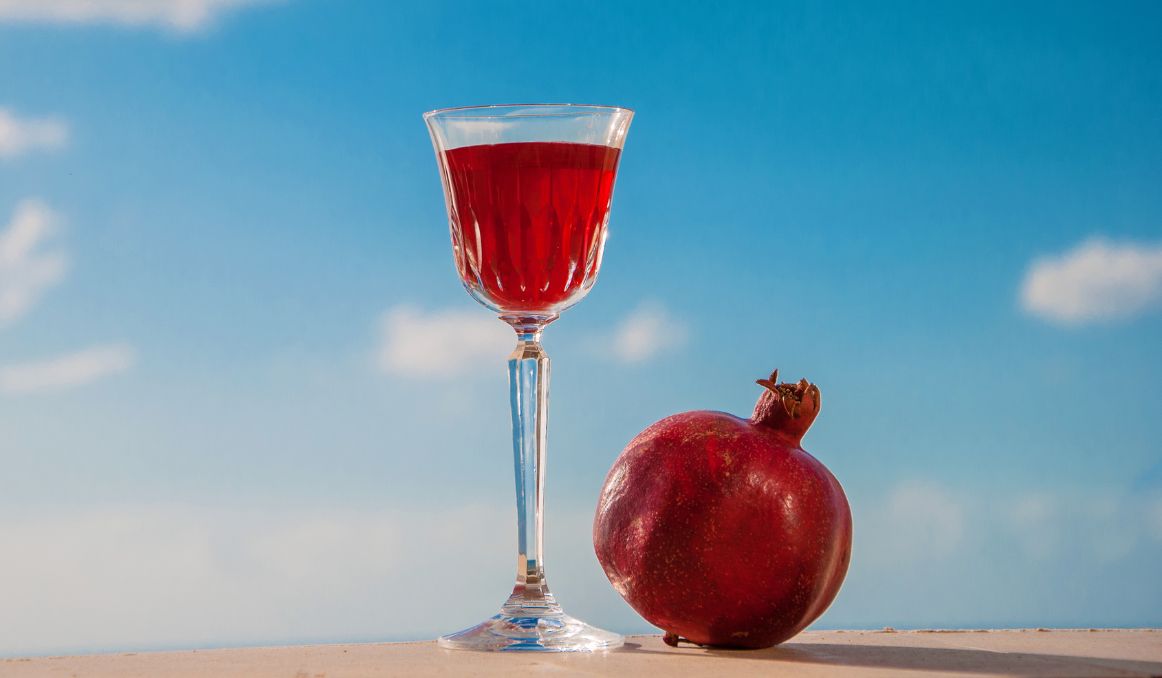The Best Yeast for Pomegranate Wine
What many, many people, even including novice winemakers, do not realize, is that you can make wine with virtually any fruit and with virtually any yeast.
Are there preferred yeast for various fruit wines? Sure. Is there, for example, a best yeast for pomegranate wine? Maybe.
But more important than anything is realizing that the key to making a great fermented drink is to understand the fermentation process, understand your fruit, and understand your yeast.
Then, you can experiment from there.

Wine and Yeast
Winemaking really is as simple as crushing fruit and letting yeast ferment it.
There is a reason wine is the oldest fermented beverage in the history of humanity, and perhaps even longer than that.
Wine is nature’s creation. It has been called the nectar of the gods and a miracle.
And it makes sense.
Since virtually the beginning of humanity, a person could simply crush fruit, leave it out to the elements, come back a week later, and have wine.
This reality rings true because yeast is virtually everywhere. As long as it is warm, moist, and oxygen rich, you can expect yeast to be hovering nearby in the atmosphere.
It is also really difficult to kill. Yeast thrives in most locations on the globe, and it can lie dormant when it does not get what it wants immediately.
It has survived on this planet alongside sugar for millennia, and perhaps even millions of years.
At this stage, it is important to note that, for most of human civilization, the only yeast that has ever been used to make fermented beverages has been native, local yeast.
It has only been in the last two centuries that manufacturers have harvested, packaged, and shipped yeast to brewers, bakers, and winemakers.
Pomegranates and Yeast
So, when considering what yeast is best for pomegranate wine, or any other wine or beer for that matter, it is most helpful to think about what region that fruit or grain grows in and what yeast you would find there.
This is how nature has always functioned before humans got involved and started harnessing it, which is how we commonly end up with wine or beer with off flavors, stagnant fermentation, or batches of brew or wine that do not live up to expectations or hopes.
Pomegranates are an ancient fruit depicted in some of our oldest known oral stories and literature.
Remember it was pomegranate seeds that Persephone ate in Greek mythology, which kept her tied for six months to Hades in the underworld.
Pomegranates seem to be a Mediterranean fruit, and are thought to have originated in Persia, but extended quickly out to Arabia, Afghanistan, China, and India.
Thus, it would make sense that the best pomegranate wine would be made in those regions, using local, wild yeast.
The process would be a simple one, involving the removing of the outer peel of the fruit, the crushing of the seeds to make juice, and then the steeping of that juice in a vessel for several days.
Wild yeast would then hover nearby, attracted to the sugars in the juice, and ferment those sugars, converting them to alcohol and carbon dioxide.
Today, of course, we want to be able to grow pomegranates in the United States and northern Europe, where they may not ever grow naturally, and we want to be able to use any yeast on the market.
And this is the blessing of human innovation.
We can.
We can grow pomegranates virtually anywhere, and we can choose from among dozens of options of yeast.
So, how do we make pomegranate wine outside of those native regions? And which is the best yeast for pomegranate wine?
Best Yeast for Pomegranate Wine and a Recipe

Pomegranate wine is probably the closest to actual wine made with grapes as pomegranates are, like grapes, relatively acidic, have high sugar concentrations, and are packed with nutrients in their flesh.
Furthermore, pomegranates are one of the few fruits that, like grapes, can be used to make wine on their own.
Most other fruits require the inclusion of grapes or another grape-like fruit to balance them out.
The key to making great pomegranate wine is to get pomegranates from their native regions, usually warm, arid climates like the Mediterranean, Southern California, or Texas.
You want to select pomegranates at their peak ripeness, rich which sugars, and you will drink the wine right after bottling for maximum flavor and aroma.
The best yeast for pomegranate wine is typically going to be a Montrachet, which is a versatile wine yeast with complex flavors and aromas, ferments strongly, and has a good alcohol tolerance.
It is well suited for full bodied wines, which you can expect from pomegranates.
You can also use a champagne yeast, which is a clean, neutral yeast that will pack a punch and deliver a sparkling wine, ferments quickly, and is also tolerant of high alcohol conditions common in pomegranate wine because of all the sugar.
To make pomegranate wine, you will need:
- Pomegranates or pomegranate juice
- The classic recipe calls for a 5-gallon jug, so about 4 gallons of pomegranate juice to leave headspace
- 1 pack of yeast
It also helps to have an airlock to release pressure from your vessel during fermentation.
Some winemakers will also add sugar for extra alcohol and lemon juice or another acid to balance the sweetness.
You can also add a black tea for tannins.
From there, you simply combine your ingredients and allow your must to sit for about 10 days.
Rack it, transferring it to another vessel for secondary fermentation, and allow to sit for another 2 weeks to 30 days.
Now bottle and drink your wine!
Cheers!
Passionate about the wine making process? So are we! If you’re interested in finding out how you can use our technology to control fermentation and monitor your yeast, save work hours and improve the cost-efficiency of your business, drop us a line at [email protected] or check out our product page:
Also, you can now get access to a fully functional demo account to test your yeast via our Web App. Completely free of charge and with no commitment to purchase.


